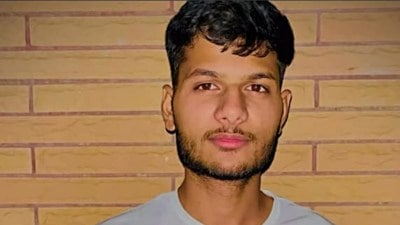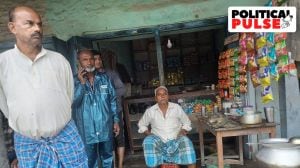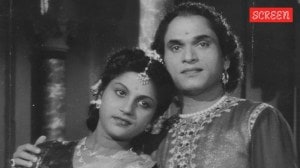The Horcrux of the matter
The penultimate Potter film is in theatres. Time to ask readers,authors and publishers: what kind of a world has it left in its wake?
The penultimate Potter film is in theatres. Time to ask readers,authors and publishers: what kind of a world has it left in its wake?
In the past few years,childrens publishing has changed massively in India and across the world largely due to the Harry Potter phenomenon. With the penultimate film,Harry Potter And The Deathly Hallows: Part One,releasing in India last week,the time has come to ask: is it over now? And if so,what kind of a world has it left in its wake?
According to the Grand Wizards of Publishing Punditry,Potter cannot be used to generalise about anything. It is a one-off,extraordinary and unprecedented event a bit like being hit by a meteorite.
According to other,equally learned opinions,it is a sign,a symptom,a thing to be interpreted; over 400 million copies sold in 67 languages: surely,it must tell us about something?
It skewed sales figures,tipped GDPs,made lots of non-reading children into readers (according to some),had no impact at all on childrens reading habits (according to others); was more read by adults than children or vice versa; practically invented a whole new genre (crossover fiction); was radical and subversive or conservative and retrogressive depending on who you were reading; and introduced a slew of new words and phrases into the language. And if you dont believe that last one,youre a muggle.
The trouble is that there are so many Potter readers/viewers out there,that you can support almost any theory with reasonably large statistical evidence. So rather than risk opening that particular can of hinkypunks,I decided to ask a select few Indian writers,publishers and readers what they made of the whole kaboodle.
Samit Basu is,I guess,the nearest that we have to a crossover fiction author. Which makes him sounds like Professor Snape dressed as Grandma Longbottom,but all I really mean is that his books in particular the GameWorld Trilogy are read as much by adults as by teens. There hasnt been much work in Indian fantasy for adults, he says. Most of the good stuff is in the young adult/childrens space Anushka Ravishankar,Payal Dhar,Anshumani Ruddra and Kalpana Swaminathan.
Anushka Ravishankar probably wouldnt include herself in the pack at all,I dont think of myself as a fantasy writer although if you look at books like Moin and the Monster,of course,there are fantasy elements. She explains the lack of fantasy in adult literature,saying children make the shift much more easily. Author of A Shadow in Eternity trilogy,Payal Dhar,concurs: Fantasy has always been a central theme in childrens literature. Magic,strange creatures,talking animals and what-have-you have always been around,but probably Pottermania has made it far more trendy in recent times. But I do think it has some way to go in India,since a lot of the work coming out has been very derivative. Not to say there isnt some great stuff too: Giti Chandras Fang Of Summoning leaps to mind.
Arti Jain,of the online lending library friendsofbooks.com,agrees: Mythologies and classics still outsell (and out-rent) all other kids books. Indian fantasy books are few and far between. In her experience,which books kids read usually comes down to the parents: Well-meaning parents foist on their kids books that they think are good either because a) they read them when they were kids (e.g. Enid Blytons); b) they have kosher content and/or because they have message or educational value built-in (e.g. Mahabharata,Jataka Tales,Panchatantra); or c) books that they think all kids are reading these days (eg Harry Potter). The result is that sadly,there is very little encouragement to try new genres,experiment and explore.
Swati Roy,one of the organisers of the Bookaroo Childrens Literature Festival which takes off this weekend at the IGNCA,New Delhi,also laments that the parents who visit her bookshop in Delhi pick out books for their kids more for their educational value than for their fun quotient.
So,where does the blame lie? Is it with the computer game-obsessed,non-reading,pesky kids themselves? Or their narrow-minded parents? Or are the dementors in the woodpile actually Indian childrens publishers afraid to stray from the tried-and-tested path and risk their bottom lines? Or,dare we say it,the authors themselves,whose imaginative broomsticks are less jaadu and more jharu?
The world of childrens and young adult books (and films) these days is certainly not all sweetness and light. Take a look at any of the recent book-turned-film offerings Philip Pullmans His Dark Materials trilogy,C S Lewiss Narnia series,Stephenie Meyers Twilight,Tolkeins The Lord Of The Ring,and the Potter films themselves and its all pretty horrific. No sooner do teenagers appear on the screen than they transmogrify into the Undead. Or are skewered by rampaging Orcs. Or something. Last weekend,watching Deathly Hallows with my eight-year-old,I did wonder whether the sight of a hapless teacher being tortured and then devoured by an 18-foot-long python was really quite um well,you get the picture.
And whats with all the vampire-sex these days? Its a particularly strange phenomenon that here,parents (and teachers and librarians) who delicately shy away from books by Indian writers that might just might touch upon something risqué turn a cheerful blind eye as their daughters lap up the latest lusty American werewolf. Perhaps,to quote critic Sanjoy Roy,Adolescence itself is a kind of twilight zone,a border town between the law-abiding states of childhood and adulthood where all kinds of weird shit could happen.
By contrast,Indias young adult books do seem a bit,well,tame. Is that because writers,consciously or unconsciously,skirt issues that cannot be named?
Ranjit Lal,author of many books for children and adults,fiction and non-fiction,illustrated and not feels that the dilemma for writers is not so much in writing the story as wondering what the publishers will accept! Sometimes,I think theyre the Censor Board. For him,a writers task lies in pushing the envelope and he certainly does that in,for example,Faces in the Water,a book which tackles the issue of female infanticide,and in the forthcoming Black Limericks,about sexual harassment and blackmail within the family. Paro Anands No Guns at my Sons Funeral (about conflict-torn Kashmir) and Siddhartha Sarmas Crossword Award-winning historical drama Grasshoppers Run set in Japanese-occupied Nagaland during World War II are both excellent examples of how writers tackle tough political issues with a gritty realism rather than resort to fantasy and magic.
The hero of Payal Dhars trilogy is a 13-year-old girl who is going through her own night of the soul as well as grappling with a fast-changing body and a gamut of emotions. I cant think of anything that stops me from writing what I want to in fact,I havent yet come across a publisher whos said: Gasp you cant write about that in a childrens book, says Dhar.
So,in the true spirit of Hogwarts School of Witchcraft and Wizardry and with apologies to JK,I have given out wands and devised my own spelling test. If you could wave your magic wand at the world of Indian childrens books,what spell would you cast?
Swati Roy casts Lexifunnicus a spell to make parents realise that reading is for pleasure. Sayoni Basu,head of Scholastic India,casts Noxbiblio Crappicarnum an incantation that paralyses presses from printing any-old-rubbish for kids and getting away with it. Anushka Ravishankar is clearly desperate. She chooses an unforgivable curse Crucio! to prevent all writers of didactic childrens books from ever setting pen to paper again.
Samina Mishra,a childrens author,independent filmmaker and mother,is more benevolent. She would cast a Patronus charm aimed at The Powers that Be to make good-looking,fun,well-produced books available cheaply.
Payal Dhar would brew up a complicated spell that would create a vortex and suck in all the wicked gatekeepers who stop children from reading what they want to! Although,being a kind-hearted witch,she adds,Once they learn their lesson,they would be freed.
As a struggling publisher,I am tempted to throw out a widely cast Engorgio more readers,more books,greater choice,different languages,more translations,more shelf space,more bookshops,deeper pockets. On the other hand,that could get out of hand. I think Ill content myself with Riddikulus to banish the moralising boggarts with the gift of laughter.
(Anita Roy is senior commissioning editor with Young Zubaan)



- 01
- 02
- 03
- 04
- 05




























